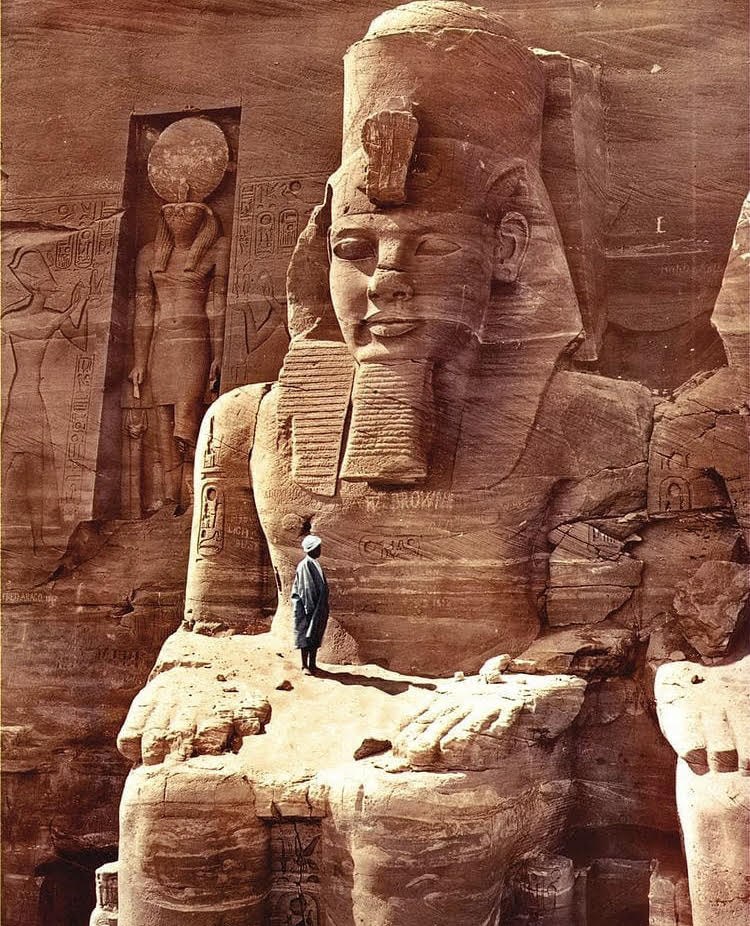THE LONELY TEMPLE IN THE DESERT: ABU SIMBEL TEMPLE - EGYPT
- BEYZA TUNCA
- Feb 1, 2021
- 4 min read
Updated: Mar 14

If you’re wondering what love can inspire people to do, let’s go back in time—far beyond the Taj Mahal, which Shah Jahan built for his beloved wife Mumtaz Mahal in 1640.
Are you ready? Our journey takes us to Abu Simbel Temple, deep in the Nile Delta of Africa, around the 1200s BC.
What best tells the story of Egypt’s 5000-year history?That’s a difficult question!This ancient civilization, with its mysterious pyramids and temples, still keeps many of its secrets hidden today.You may not know, but Egypt is home to over 100 pyramids. Yet, to truly understand Egypt’s 5000-year-old mysterious past, one must explore the temples and hidden depths along the Nile Delta.

The Journey to Abu Simbel
During his military campaign to suppress the rebellion of Nubians (present-day Sudan), Pharaoh Ramses II followed an elephant and arrived at the site where Abu Simbel would be built. He decided to have two temples constructed here. The larger temple, carved into the mountainside, took 20 years to complete. At its entrance stand four colossal statues of Ramses himself.
The smaller temple was dedicated to his beloved Queen Nefertari and the goddess Hathor. Until then, no pharaoh’s wife had ever had a statue taller than the pharaoh’s knees—let alone an entire temple! Dedicating a temple and erecting grand statues for Nefertari was a historical first and a powerful symbol of Ramses II’s devotion to her.

Who Was Ramses II?
Ramses II was the third pharaoh of Egypt’s 19th Dynasty and one of ancient Egypt’s most important rulers. He ascended the throne at age 20, lived until 90, and ruled for nearly 60 years—engraving his name deep into history. He had around 40 wives and hundreds of children.Trying to understand life 3,250 years ago is as difficult as predicting how people will live in the year 5270!
Immortality and life after death were essential beliefs for the pharaohs of ancient Egypt. That’s why they were mummified and buried with their cats, treasures, and even their riverboats in grand temple tombs.
Abu Simbel in Modern Times
Today, Abu Simbel Temple is on the UNESCO World Heritage list. During the construction of the Aswan Dam, it was discovered that the temple would be submerged. An international design competition was launched, and the winning project—by a Swedish-Egyptian team—moved the entire temple in huge blocks, piece by piece, to its current location, several kilometers away.I highly recommend watching the video of this extraordinary relocation project on YouTube! Nearly 1,000 people worked on it, and the project was completed on September 22, 1968, after 8 years of effort.

The Stories on the Temple Walls
The walls inside Abu Simbel are covered with reliefs, some of which depict Ramses II’s exaggerated victory at the Battle of Kadesh against the Hittites—the first recorded peace treaty in history. A Temple That Defies Time
Abu Simbel Temple is one of the rare monuments that has survived almost perfectly intact since ancient times. Twice a year—in February and October—on Ramses II’s birthday and the anniversary of his coronation, the sun’s rays penetrate the temple, illuminating the statues deep inside: Ramses II and the ancient Egyptian gods Amun, Ra-Horakhty, and Ptah.During these events, the temple draws huge crowds. Capturing a photo in front of the statues is tricky because flashes are prohibited, and you need to work hard to get that perfect shot!

Now for the Insights You Won’t Easily Find Online!
Cairo is Egypt’s capital and largest city, and it’s like an open-air museum itself. But that’s for another travel article! Along the Nile Delta, there are many other must-see historical sites: the Valley of the Kings, Luxor Temple, Karnak Temple…And of course, Alexandria—the country’s second-largest city and a vital Mediterranean port.But if you’ve already visited everywhere in Egypt, don’t leave Abu Simbel off your list. It’s an experience you shouldn’t miss.

Now for the Insights You Won’t Easily Find Online!
Cairo is Egypt’s capital and largest city, and it’s like an open-air museum itself. But that’s for another travel article! Along the Nile Delta, there are many other must-see historical sites: the Valley of the Kings, Luxor Temple, Karnak Temple…And of course, Alexandria—the country’s second-largest city and a vital Mediterranean port.But if you’ve already visited everywhere in Egypt, don’t leave Abu Simbel off your list. It’s an experience you shouldn’t miss.

Getting There
Abu Simbel is located in an extremely remote area near the Sudanese border. Traveling from Aswan by bus is not very practical for tourists. The 300 km journey takes at least 3.5 hours one way, and you’ll spend your entire day on the road. From my experience, Egypt has some of the worst traffic I’ve seen anywhere in the world, and the roads are dangerous and uncomfortable.
That leaves flying as the best option. You’ll fly to Abu Simbel Airport, where tourists only come to see the temple and usually return on the same plane. In fact, when you board the plane again, the flight attendants often won’t even check your ticket—you just sit back in your seat!Yes, flying is more expensive, but it’s absolutely worth it.Be sure to add Abu Simbel to your must-see list!

A Testament of Love and Power
Abu Simbel Temple is the most significant monument telling the story of Pharaoh Ramses II’s power, his belief in immortality, and his love for his favorite queen, Nefertari.
And so, in the spirit of the day,Happy Valentine’s Day! 😊

Beyza Tunca
Sources
The historical events mentioned in the text have been referenced using exact date information from http://tr.wikipedia.org/.













Comments